
Surprise! Surprise! Wall Street and global stock markets have gone negative after a run of very positive weeks. The Dow dropped 0.65%, while the NASDAQ gave up 1%.
Why is this so? Well, that’s simple — the usual suspects have been rounded up and I’ll list them to make it easy for you to digest on a Saturday morning. Here goes:
- Big run ups in stock markets often lead to a bout of profit-taking by shorter-term players.
- Central banks are being more aggressive on interest rates than was expected by this time this year.
- Inflation has been stickier and higher than expected, though the US is doing better than most.
- This week in Washington Jerome Powell told US politicians that two more rate rises are still on the cards, which disappointed optimists.
- Two more rate rises have many economists thinking that would make a recession more likely sooner than was thought last week.
- The very word “recession” over-scares the economically and market inexperienced investors more than it needs to. Technical recessions aren’t as bad for stocks as a real GFC-style recession (like the Yanks saw in The Great Recession 2007-09) or the Coronavirus recession.
US economic growth
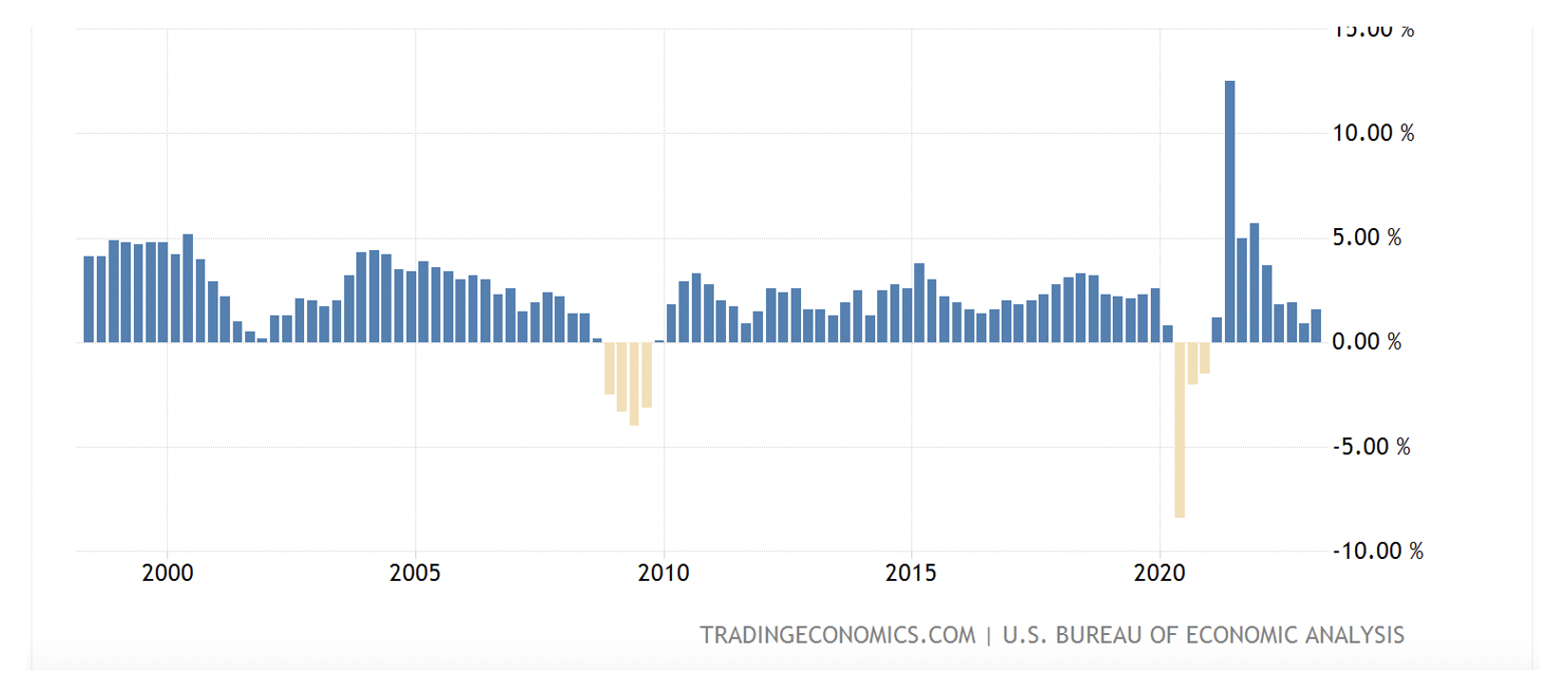
Few economists are thinking a serious recession looks likely right now. I think Powell telling the Senate Banking Committee that “it will be appropriate to raise rates again this year, and perhaps twice”, was a big negative for stocks. Also, the likes of the Bank of England hikingby a larger-than-expected 50 basis points to 5% and then the Norges Bank (Norway) also hiking by 50 basis points to 3.75%, and the Swiss National Bank raising by 25 basis points to 1.75% (with all three central banks indicating that further tightening of policy was likely to be required to bring inflation down to target), did a lot to spook stock markets.
These central bankers can sometimes act like the Mafia, colluding to terrorise consumers and business to force inflation down and it results in level-headed economists and market commentators like AMP’s Shane Oliver to freely warn about a possible Australian recession!
This is his latest take on what’s going on and it’s both bad and good news. I’ll break his thoughts down for easy digestion:
- “Global and Australian share markets have had a strong rebound over the last financial year on signs that global inflation has peaked, central banks may be near the top on rates and as worries about the war in Ukraine have receded.
- But the risk of a near-term correction is high.Leading economic indicators continue to point to a high risk of recession in the US and the risk of recession in Australia is now around 50%.
- China’s recovery is looking less robust than expected and policy stimulus there so far has been modest.
- Central banks are probably close to the top, but they remain hawkish with a high risk of going too far.
- And the period from May to September is often rough for shares, but,
- We remain of the view that shares will do okay on a 12-month view as central banks ease up as inflation cools – with the ongoing decline in our US Pipeline Inflation Indicator being supportive in this regard – but the next few months are likely to be rough.
I’ve been warning about short-term negativity as no one is completely sold on the belief that US inflation is nailed, so there’s good reason to be hesitant on going mad on stocks. There could be better buying opportunities in coming months because markets have been at relatively high levels.
The S&P 500 is up 14.6% over the past year, even after a bad week, and is 30% higher than it was just before the pandemic butchered stocks in February/March 2020!
It’s going to be data drops that will drive stocks up or down in coming weeks and months, but I do believe the past and any future central bank monetary madness will drive inflation down, and I’m gambling that any recession that results will be mild.
AMP’s Inflation Pipeline chart for the US points to more inflation falls in the not-too-distant future. Note how the red CPI is falling much faster than a few months, or even weeks ago.
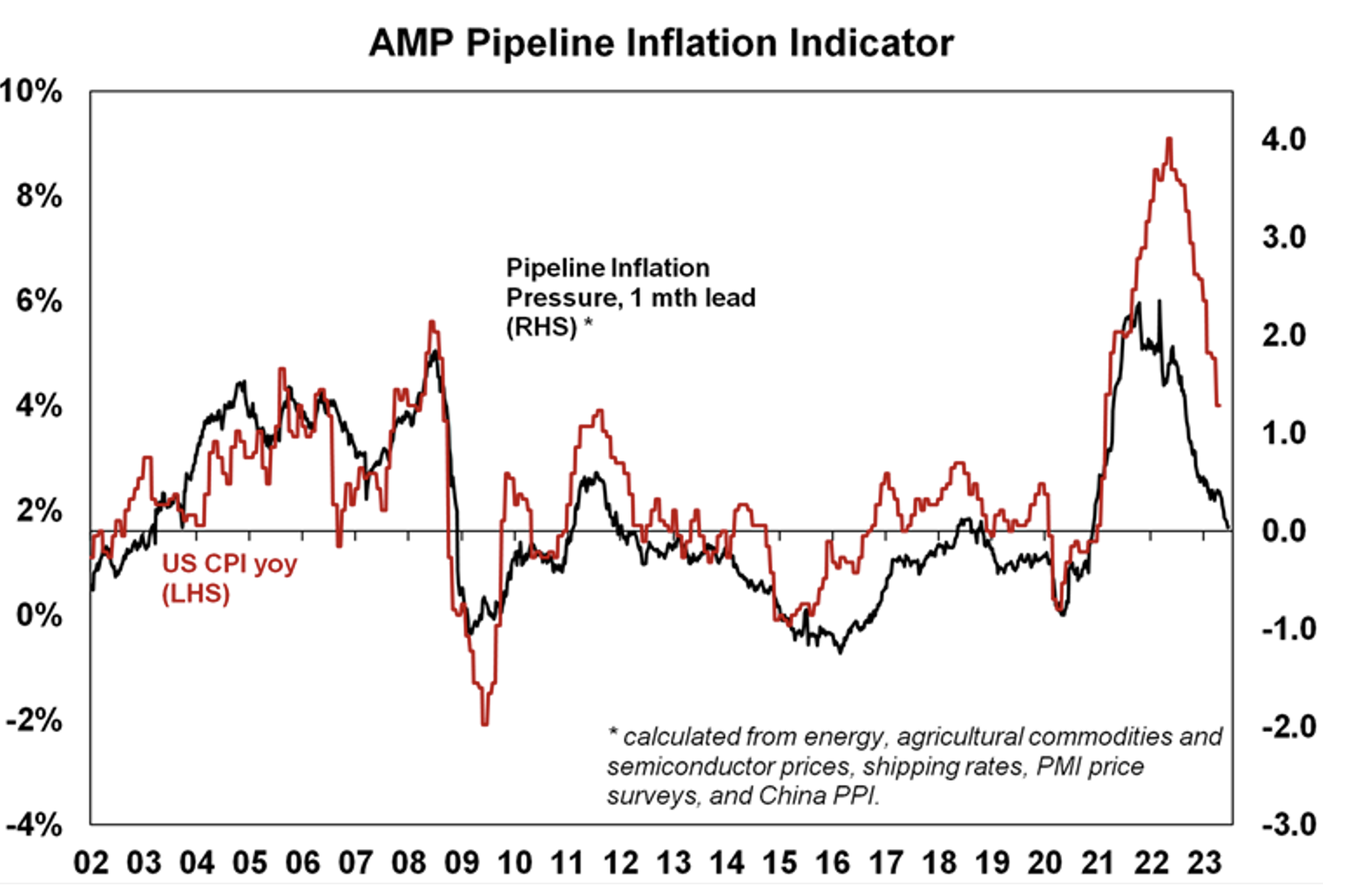
If I wasn’t suspicious that central bankers could go too hard for too long, I’d say this is 100% a buying opportunity now, but I put it more at 70%. However, I will be a keen buyer of any decent dips in coming months.
To the local story and the S&P/ASX 200 lost 152 points over the week (or 2.1%) and that means our market is up only 2.2% for the year-to-date but has spiked 7.9% for the year. The mediocre week for stocks wasn’t helped by a slide in the oil price, the interest rate comments from the Fed’s Jerome Powell and increased talk of a local recession thanks to the work of Dr Phil Lowe and the RBA board.
Here are the big winners and losers for the week:
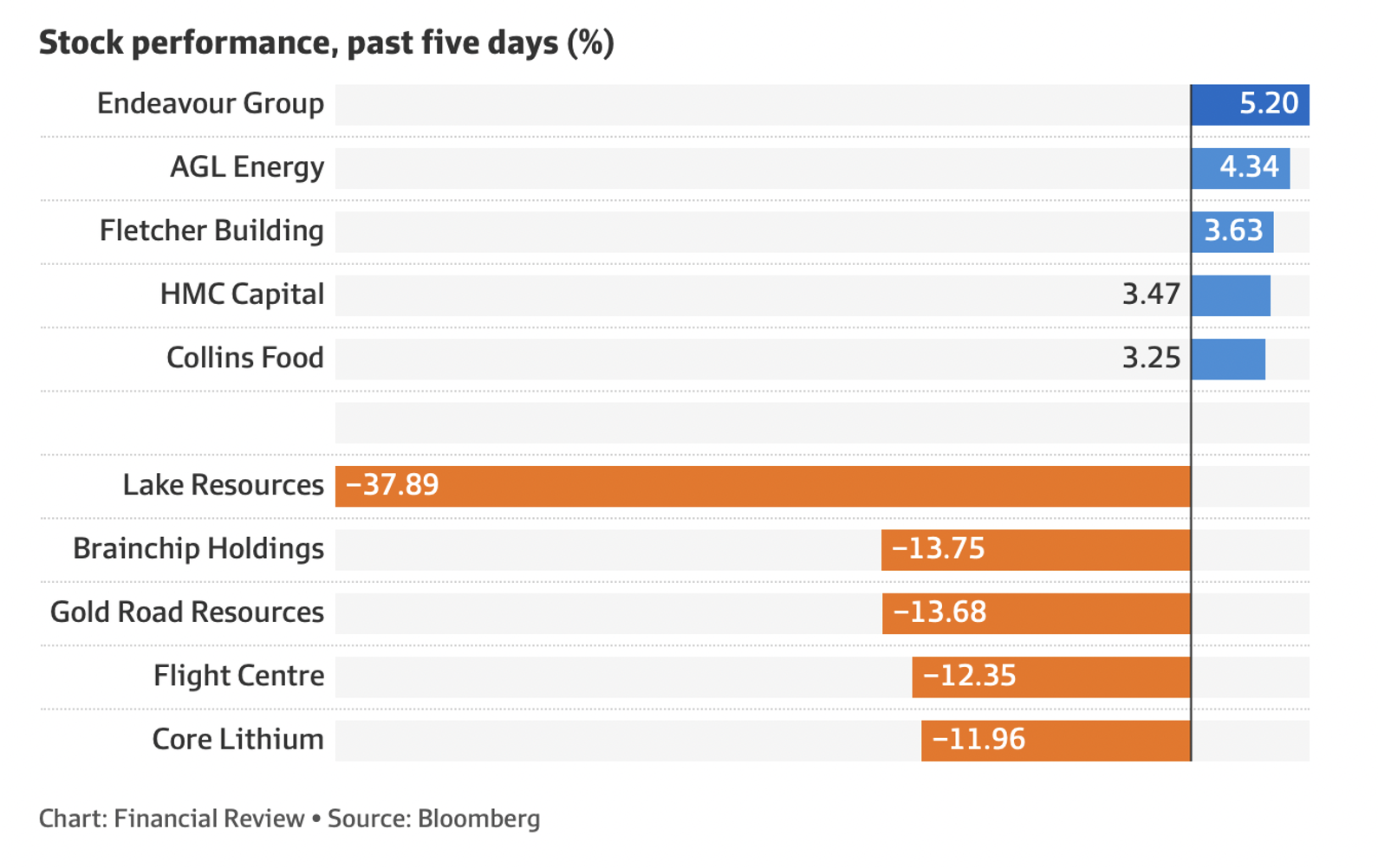
Lake Resources had a shocker following a very disappointing update on the Kachi lithium project in Argentina. That update has reset expectations for the company’s production plans and costs. Meanwhile, Flight Centre’s fall is linked to recession fears and a failure to give the guidance that some market analysts were expecting.
Woodside lost 4.5% on Friday alone and nearly 6% for the week to finish at $33.74, while Santos gave up 4.5% over the week slipping to $7.30.
Banks battled between the possible rise in rates and the threat of recession, and while the CBA lost 1.5% on Friday, over the past five trading days it was up 0.5% to $98.51. Westpac put on 0.7% over the week to $20.75, NAB rose 0.5% to $25.78, while ANZ lost 1.3% to $22.82.
For those wondering why Cochlear fell 3.5% on Friday, the AFR says the drop came “after the UK competition regulator partially blocked its planned $170 million acquisition of Oticon.”
What I liked
- Australian business conditions PMIs for June fell again but are still above the 50 growth/contraction level.
- The People’s Bank of China (PBoC) reduced its benchmark loan prime rates (LPR) by 10 basis points yesterday, providing much needed stimulus as the economic reopening wanes.
- Housing construction permits in the US rose 5.2% in May, by far eclipsing expectations for a more tepid 0.6% rise. This is good to prevent a recession, though it could be trouble for inflation-killing.
- The US services sector PMI reading was 54.1, and while it was a two-month low and below the 54.9 in May, any number over 50 means the sector is expanding.
What I didn’t like
- The RBA minutes indicate that the decision to raise the cash rate by 25 basis points in June was a close one, which is a good sign but inflation risks shifting to the upside ultimately prompted the RBA to hike the cash rate in June.
- The Bank of England hiked by a larger-than-expected 50 basis points to 5%, and it looks like all central banks are listening to each other.
- The bond market has been taking yields higher in reacting to central bank comments, which isn’t good for stocks.
- Manufacturing activity in the U.S. slowed more than expected in June, according to an S&P flash PMI.
Next week’s dramatic data drops
I want to pour over certain key data before the July RBA Board meeting, which will be on Tuesday July 4. This data comprises the May CPI Indicator (released next Wednesday 28 June), the May retail trade number (on Thursday 29 June), and house prices (revealed on Monday July 3 week just before the interest rate decision the next day).
The Week in Review
Switzer TV
- Switzer Investing We test these stocks: Liontown, Fortescue, Chalice, IDP Ed, Boss Energy & more.
- Boom Doom Zoom: JUNE 22 2023
Switzer Report
- 3 small-cap funds for long-term investors to consider
- What stocks am I buying right now?
- 6 top tax tips for 2023
- “HOT” stock: CSL
- 4 stocks under 40 cents
- Buy, Hold, Sell — What the Brokers Say
Switzer Daily
- Dr Jim tells Dr Phil his fate in July. So who’ll be the next Reserve Bank Governor?
- Twiggy & Nicola Forrest to give $5 billion for good to be done
- What will stop the RBA from hiking rates in July?
- There’s nothing spooky about Dan Mookhey and his plan to work in unison to beat inflation!
- With a possible recession coming, is it time to dump your bank?
Top Stocks — how they fared.
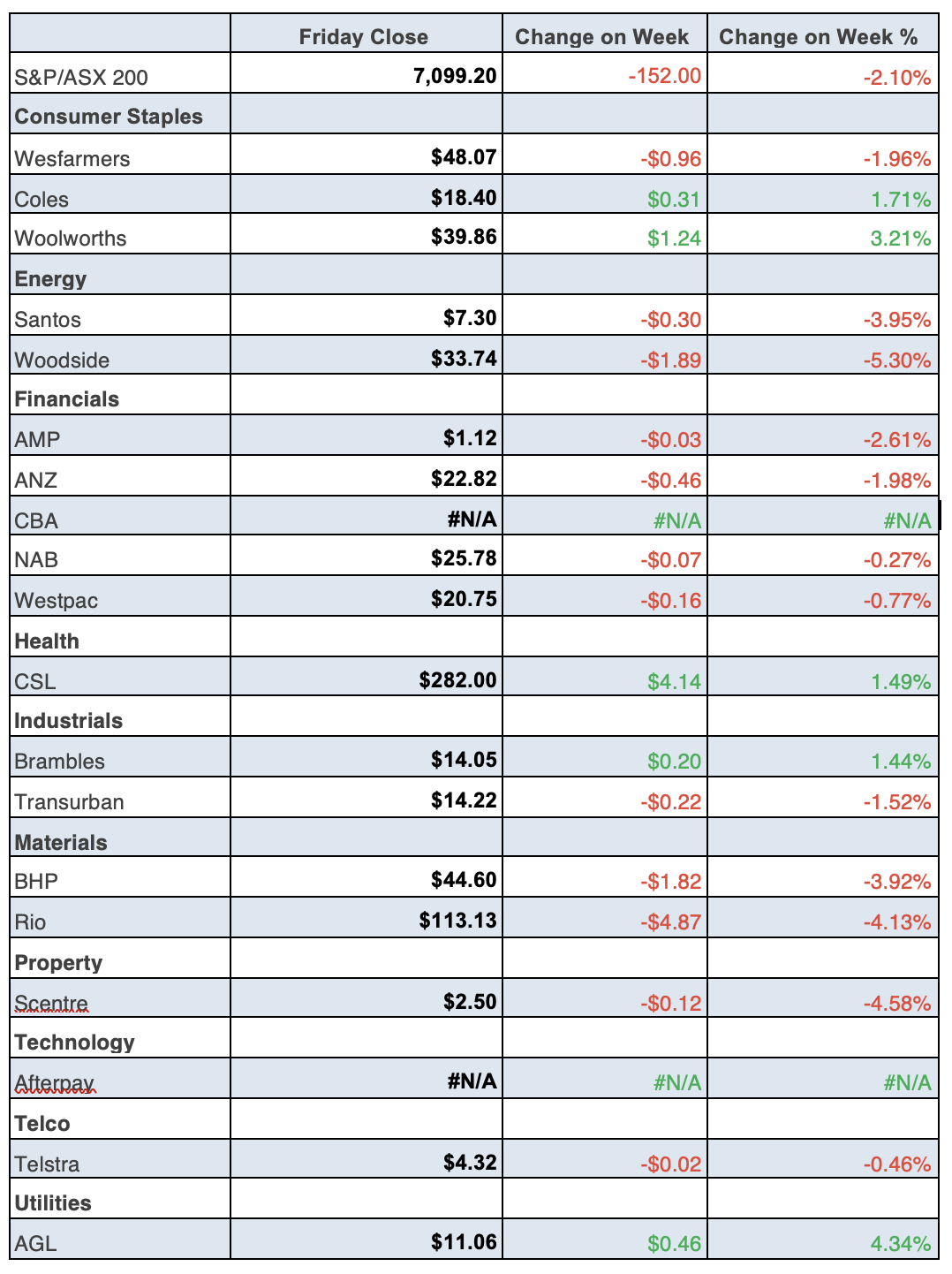
Chart of the Week
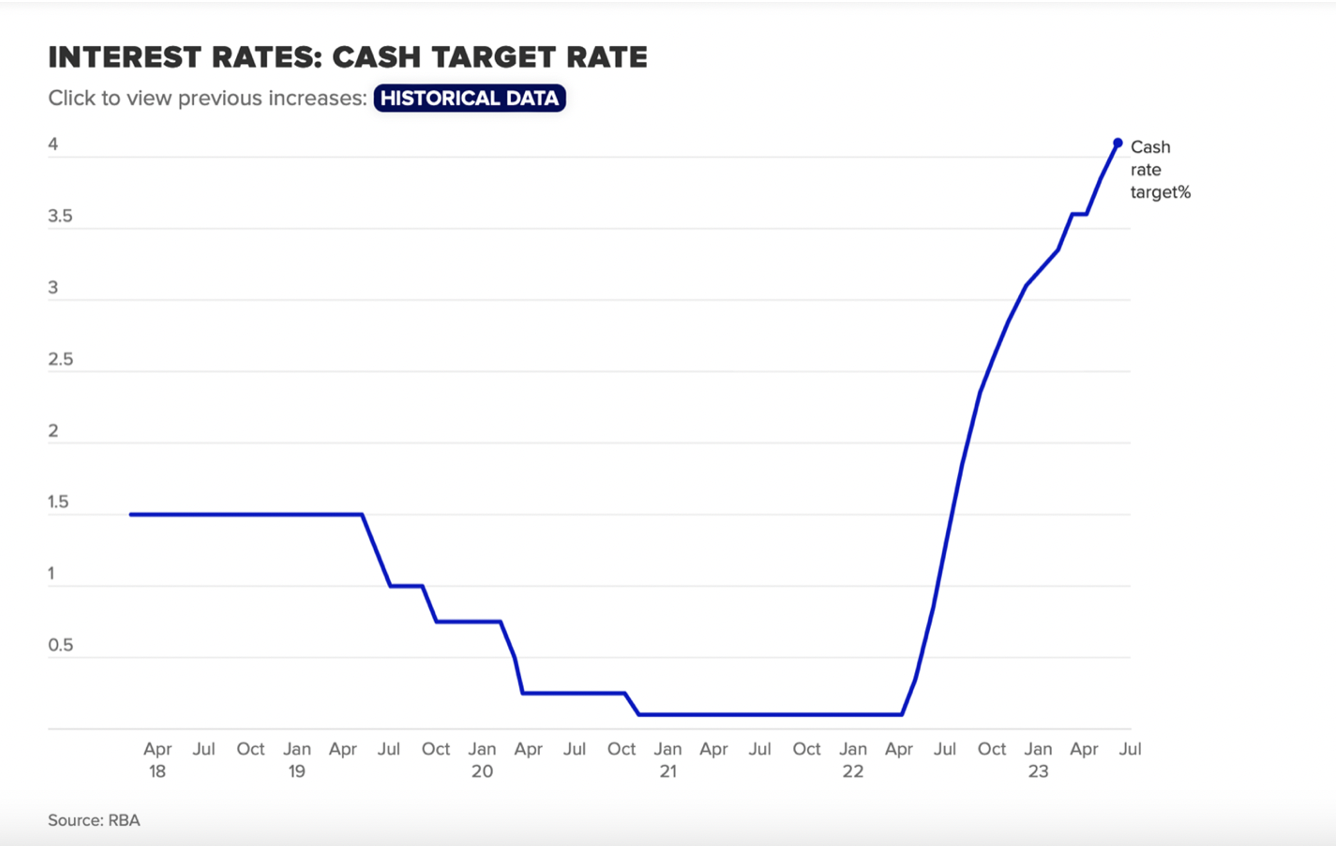
This is why I think the RBA has done enough. Let’s hope data over the next few weeks proves it!
The Week Ahead
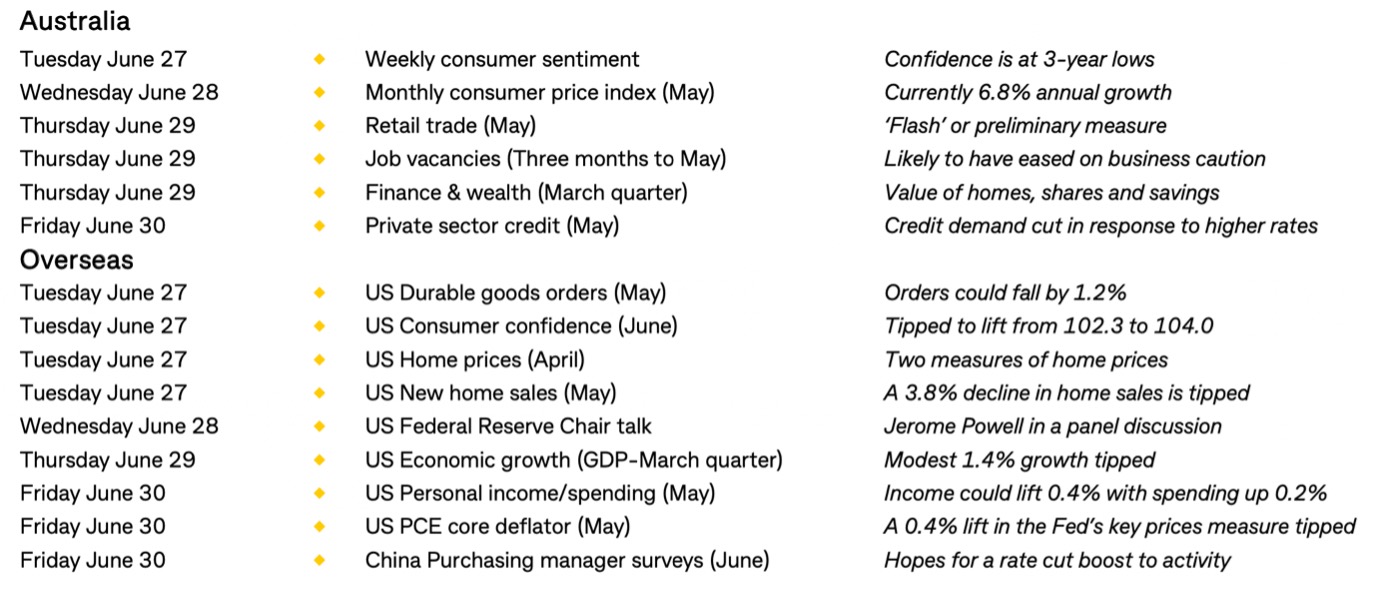
Stocks Shorted
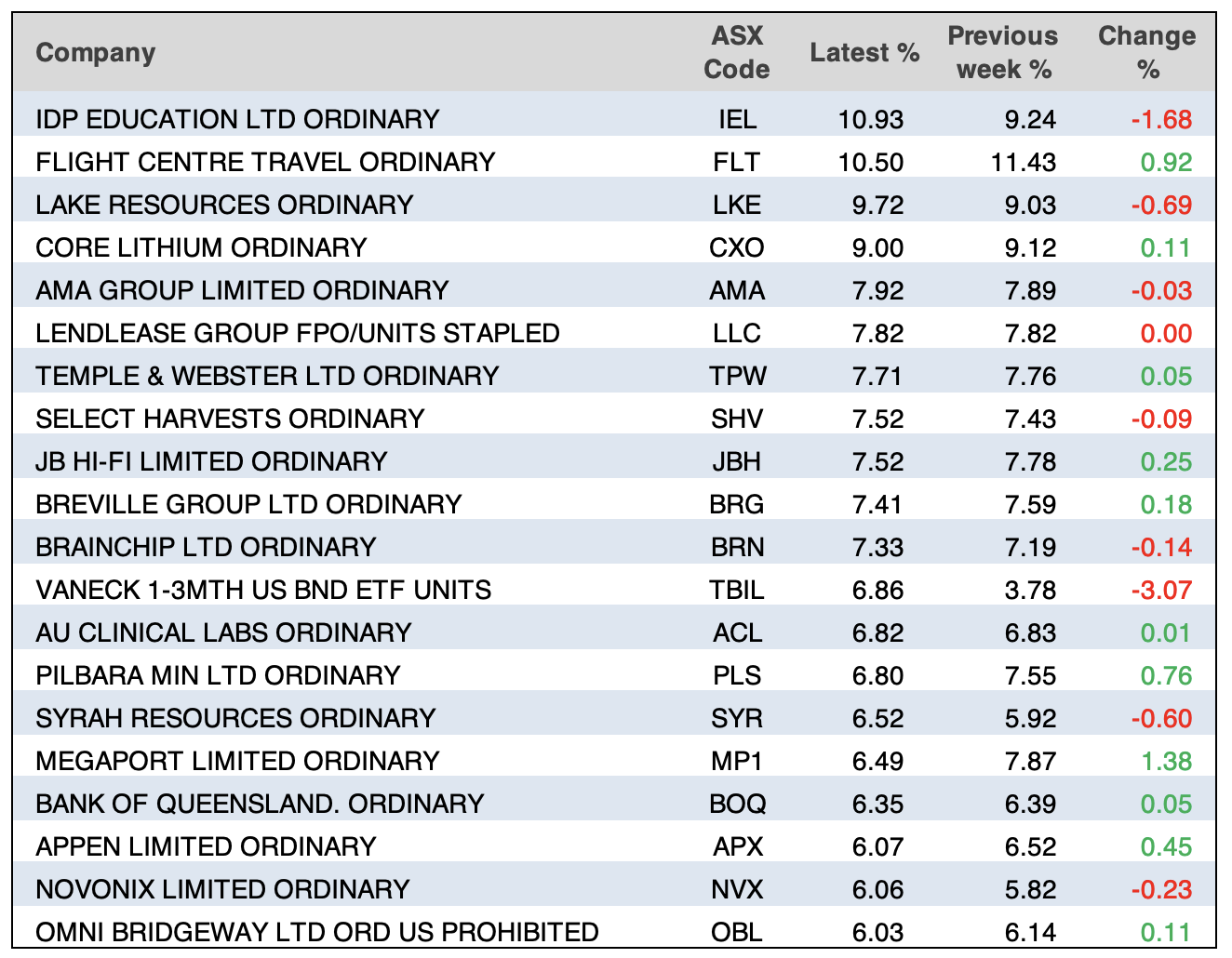
ASIC releases data daily on the major short positions in the market. These are the stocks with the highest proportion of their ordinary shares that have been sold short, which could suggest investors are expecting the price to come down. The table shows how this has changed compared to the week before
Quote of the Week
““With this year’s S&P 500 gain of nearly 15% YTD through June 16, history suggests investors hold onto their hats, since a stellar H2 may be in order,” Sam Stovall, CFRA’s chief investment strategist, said in a client note Tuesday.
(CNBC says Stovall’s research shows: “When the S&P 500 is up more than 10% through June — it has risen 14.5% year to date — the second half has averaged an increase of 8%, nearly double the typical 4.2% average return for the July-through-December period, according to CFRA. The scenario has seen gains 82% of the time.”)
Disclaimer
Important: This content has been prepared without taking account of the objectives, financial situation or needs of any particular individual. It does not constitute formal advice. Consider the appropriateness of the information in regard to your circumstances.

